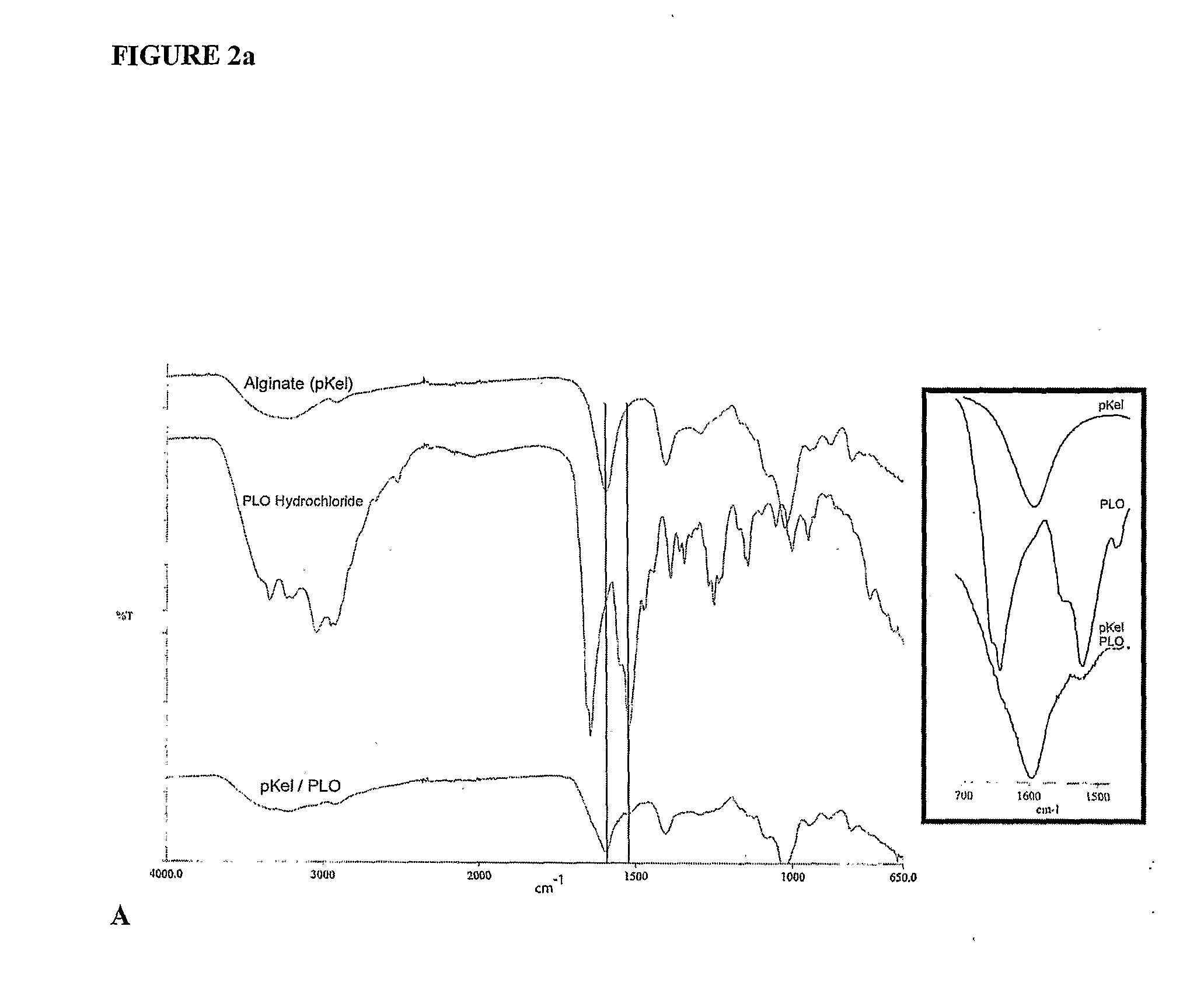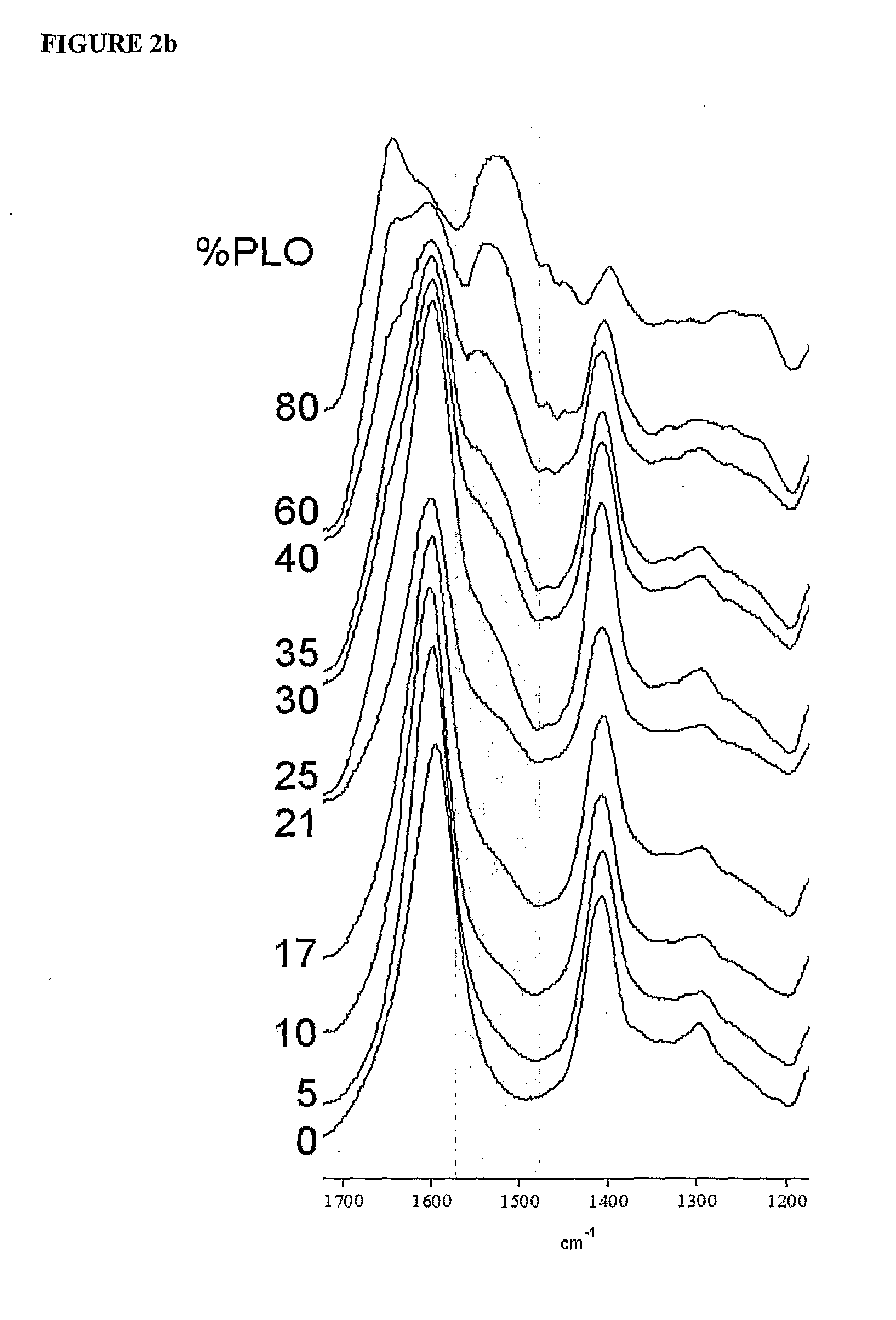Encapsulation system
a technology of encapsulation system and encapsulation capsule, which is applied in the field of encapsulation system, can solve the problems of limited material strictness, wide use, loss of graft survival and rejection, etc., and achieves enhanced surface morphology, reduced degradation rate, and prolonged protection
- Summary
- Abstract
- Description
- Claims
- Application Information
AI Technical Summary
Benefits of technology
Problems solved by technology
Method used
Image
Examples
example 1
Intraperitoneal Stability of Alginate-Polyornithine Microcapsules in Rats
An FTIR and SEM Analysis
Materials and Methods
Study Design
[0141]Monodisperse alginate-PLO microcapsules were fabricated from 5 different types of alginate and injected into the peritoneal cavity of Long-Evans rats. Prior to transplantation, the materials were characterized in vitro for the ratio of mannuronic acid to guluronic acid (M:G Ratio), endotoxin and protein levels, viscosity, and molecular weight. After 14, 30, 60, and 90 days, capsules were retrieved from each animal. The geometry of the retrieved capsules was assessed and the capsules were analyzed for chemical integrity by Fourier-Transform Infrared spectroscopy (FTIR) and surface morphology by scanning electron microscopy (SEM).
Encapsulation Materials Source and Purification
[0142]Lyophilized alginate was purchased from 5 sources either in raw or purified form. 2 sources were provided in purified form by the manufacturer (see below) and the other 3 w...
example 2
Characteristics of the Polycation PLO (poly-L-ornithine)
[0177]The polyanionic core of calcium alginate requires a polycationic coating to contribute to the strength and the semipermeable characteristics of the biocompatible capsule. The polycation exists as a mixed population of molecular species of varying lengths and hence of varying molecular weights. Studies were conducted to determine the preferred molecular weight species of PLO. Biocapsules were made as described in Example 1 using different batches of PLO to obtain capsules wherein the encapsulated cells or beads were centrally placed and the capsule wall not compromised.
[0178]High MW Species: As summarized in the Table 4 below, biocapsules were optimally intact when the composition of the PLO did not contain high molecular weight species above 42 KDa. PLO of average MW of 42 KDa and 56 KDa produced unacceptable capsules which adhered to each other forming clumps.
TABLE 4Optimal Capsules using PLO of low Molecular WeightPLO A...
PUM
| Property | Measurement | Unit |
|---|---|---|
| Length | aaaaa | aaaaa |
| Length | aaaaa | aaaaa |
| Length | aaaaa | aaaaa |
Abstract
Description
Claims
Application Information
 Login to View More
Login to View More - R&D
- Intellectual Property
- Life Sciences
- Materials
- Tech Scout
- Unparalleled Data Quality
- Higher Quality Content
- 60% Fewer Hallucinations
Browse by: Latest US Patents, China's latest patents, Technical Efficacy Thesaurus, Application Domain, Technology Topic, Popular Technical Reports.
© 2025 PatSnap. All rights reserved.Legal|Privacy policy|Modern Slavery Act Transparency Statement|Sitemap|About US| Contact US: help@patsnap.com



